In the words of Jackson Pollock, “My painting does not come from the easel. I prefer to tack the unstretched canvas to the hard wall or the floor. I need the resistance of a hard surface. On the floor I am more at ease. I feel nearer, more part of the painting, since this way I can walk around it, work from the four sides and literally be in the painting. I continue to get further away from the usual painter’s tools such as easel, palette, brushes, etc. I prefer sticks, trowels, knives and dripping fluid paint or a heavy impasto with sand, broken glass or other foreign matter added.”
“When I am in my painting, I’m not aware of what I’m doing. It is only after a sort of ‘get acquainted’ period that I see what I have been about. I have no fear of making changes, destroying the image, etc., because the painting has a life of its own. I try to let it come through. It is only when I lose contact with the painting that the result is a mess. Otherwise there is pure harmony, an easy give and take, and the painting comes out well.”
 Jackson Pollock was an influential artist of the Abstract Exprssionist Movement who radicalized painting with his “drip style” technique that revolutionized art for future generations. He showed the world that canvas did not need to be set upon an easel, but rather spread out in the raw where the artist could become fully immersed in his craft and approach it from all sides and angles. Pollock’s paintings are alive with motion, energy, and spontaneous fluidity, fueled by the use of unconventional materials.
Jackson Pollock was an influential artist of the Abstract Exprssionist Movement who radicalized painting with his “drip style” technique that revolutionized art for future generations. He showed the world that canvas did not need to be set upon an easel, but rather spread out in the raw where the artist could become fully immersed in his craft and approach it from all sides and angles. Pollock’s paintings are alive with motion, energy, and spontaneous fluidity, fueled by the use of unconventional materials.
For our homeschool art lesson this week, I printed out several examples of Jackson Pollock’s paintings, and shared them with my boys. We talked about Pollock’s innovative style of painting, and they were anxious to try it out for themselves. We watched this MoMA video (below) that demonstrates the technique, and then we gathered up supplies to create our own Pollock-inspired paintings. (For even more learning fun, visit JacksonPollock.org where you can create your own Pollock-inspired art right on your computer screen!).

Clearly this is going to get really messy, so make sure that your child has proper clothing (and shoes!) on, and set up the activity in an area that won’t suffer from a lot of excess paint splatter. We used large pieces of cardboard (recycled from a shipping box) for our canvases, and we used the cluttered junk corner of our side yard (that will soon undergo a garden makeover – yay!).
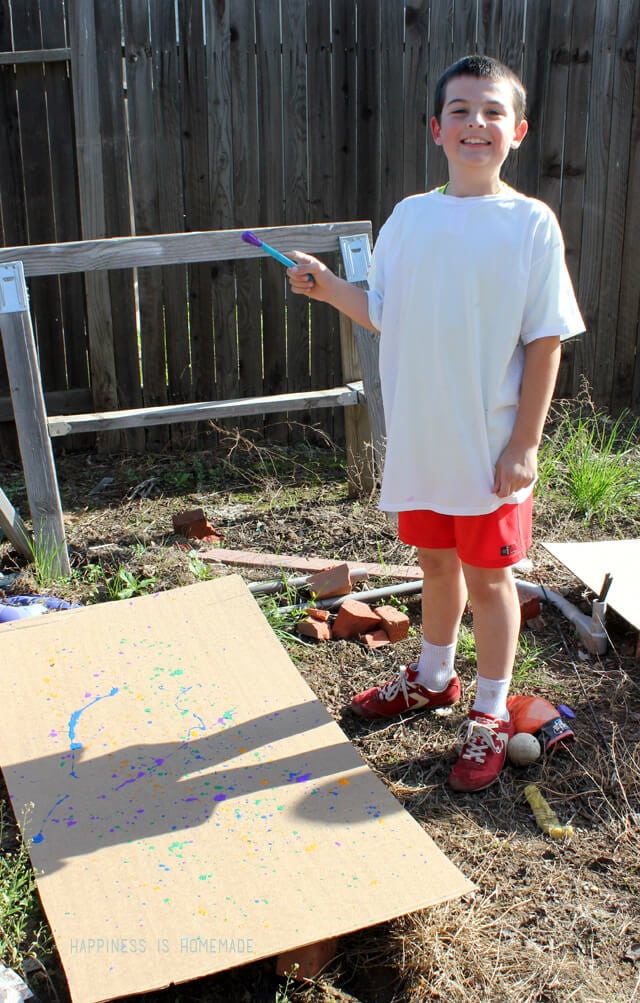 We used slightly thinned (watered down) tempera paints for our paintings, and the kids had a bit of a tough time getting the pour/drip action because the paint was still just a little too thick. No worries though, they were more than happy to use the fling and splatter technique instead.
We used slightly thinned (watered down) tempera paints for our paintings, and the kids had a bit of a tough time getting the pour/drip action because the paint was still just a little too thick. No worries though, they were more than happy to use the fling and splatter technique instead.
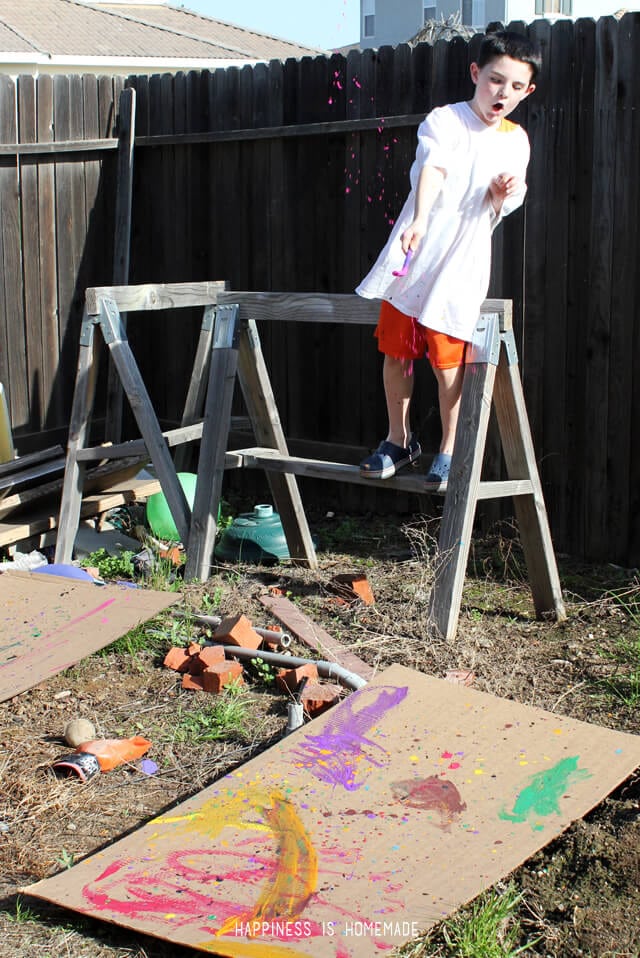 They worked around all four sides of their canvases, dripping and splattering paint from every possible angle (even way up high!). This activity was definitely all about motion and becoming immersed in your work!
They worked around all four sides of their canvases, dripping and splattering paint from every possible angle (even way up high!). This activity was definitely all about motion and becoming immersed in your work!
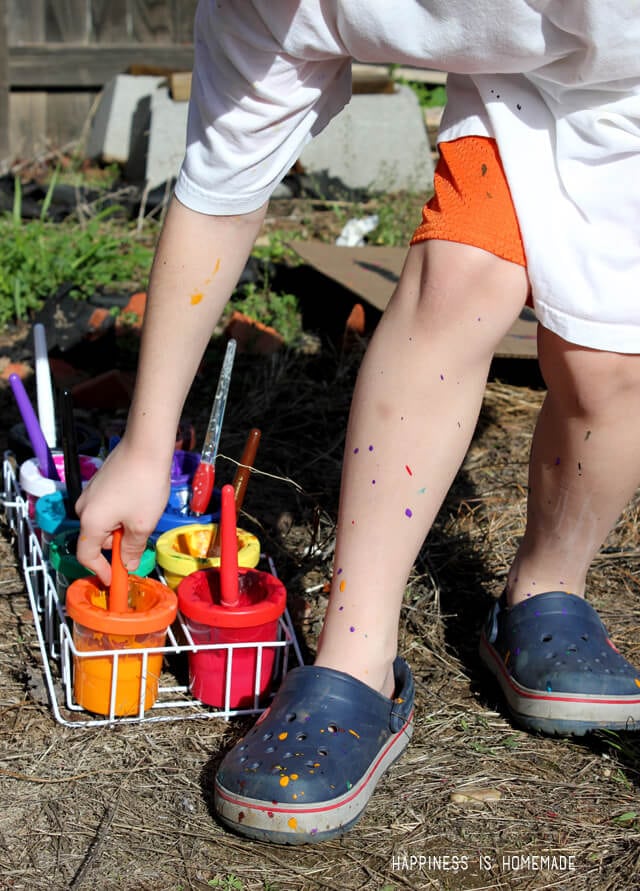 (This was taken about ten minutes into it…you should have seen his legs and shoes thirty minutes later!)
(This was taken about ten minutes into it…you should have seen his legs and shoes thirty minutes later!)
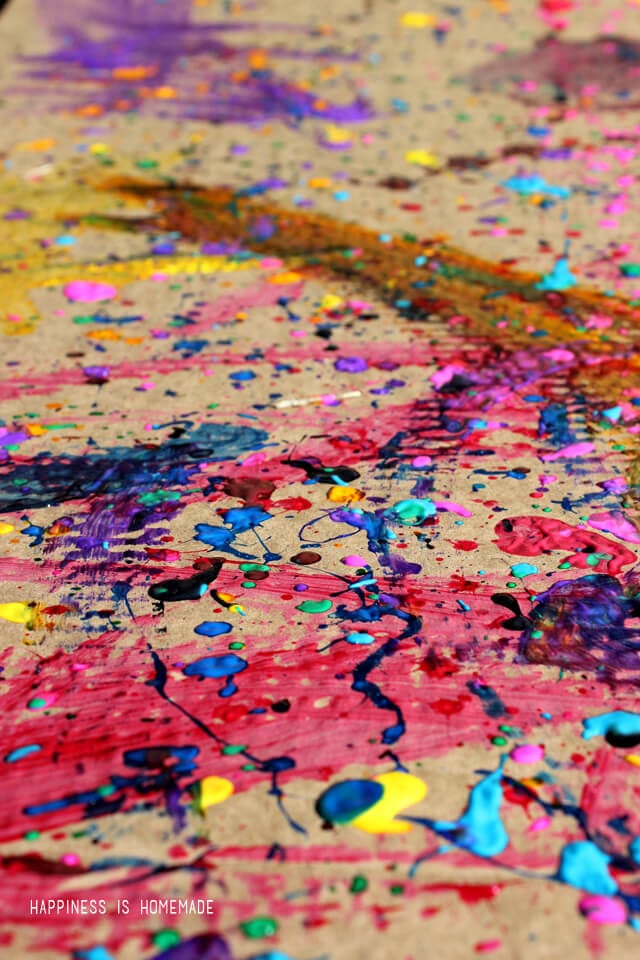 I love the way that these turned out!
I love the way that these turned out!
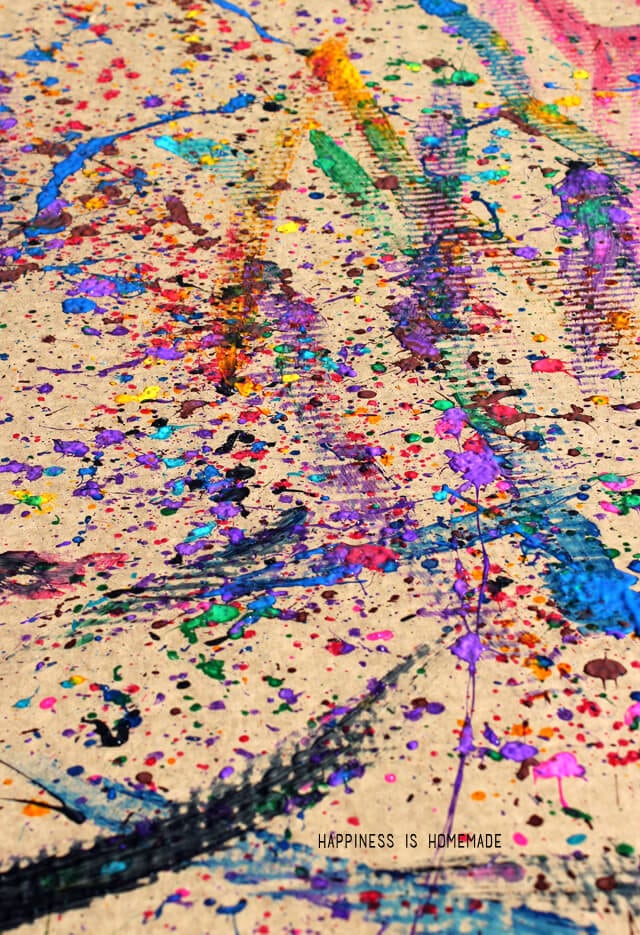 Both boys rated this activity a 10/10, and they can’t wait to try it again. As for these colorful art pieces, I’m going to frame them and hang them up in our playroom!
Both boys rated this activity a 10/10, and they can’t wait to try it again. As for these colorful art pieces, I’m going to frame them and hang them up in our playroom!


Heidi Kundin has captivated the hearts of millions with her colorful and inspiring approach to crafting, celebrations, and family fun. With over 15 years of experience, Happiness is Homemade has become a must-visit destination for those seeking quick and easy creative ideas and last-minute solutions. Heidi’s warm personality shines through her posts, inviting readers to join her on a creative journey that’s fun, rewarding, and achievable. Heidi is also the author of Homemade Bath Bombs & More and DIY Tie-Dye.


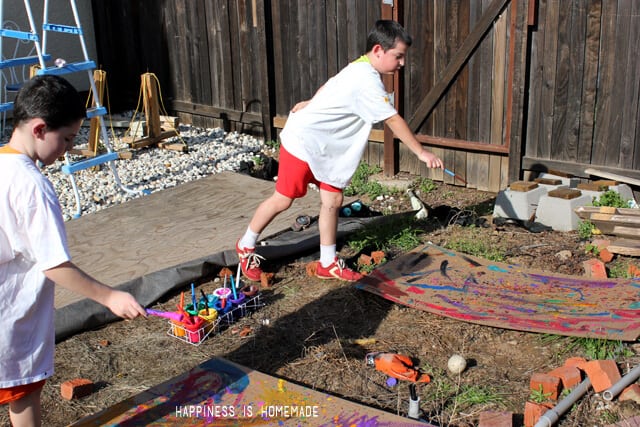
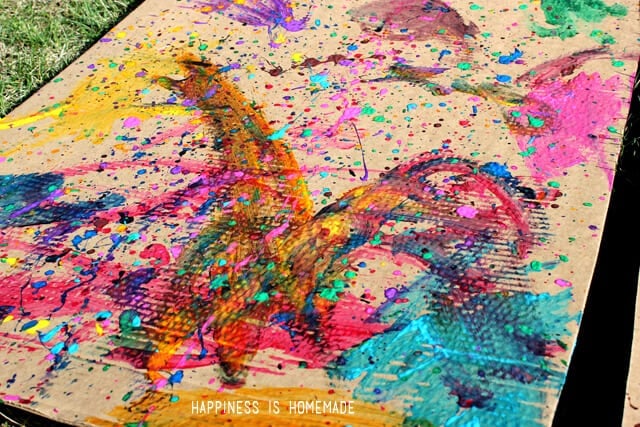
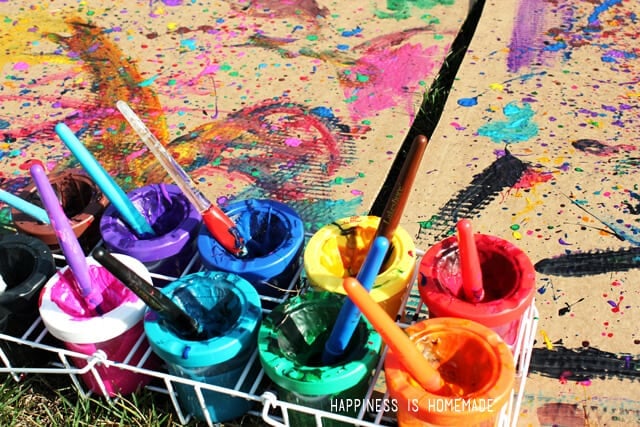
Inspirational! My son and I start studying Jackson Pollock this week. Thank to you for sharing your experience and knowledge.
So glad you liked it and could find it helpful, Marion! Thanks for stopping by! 🙂